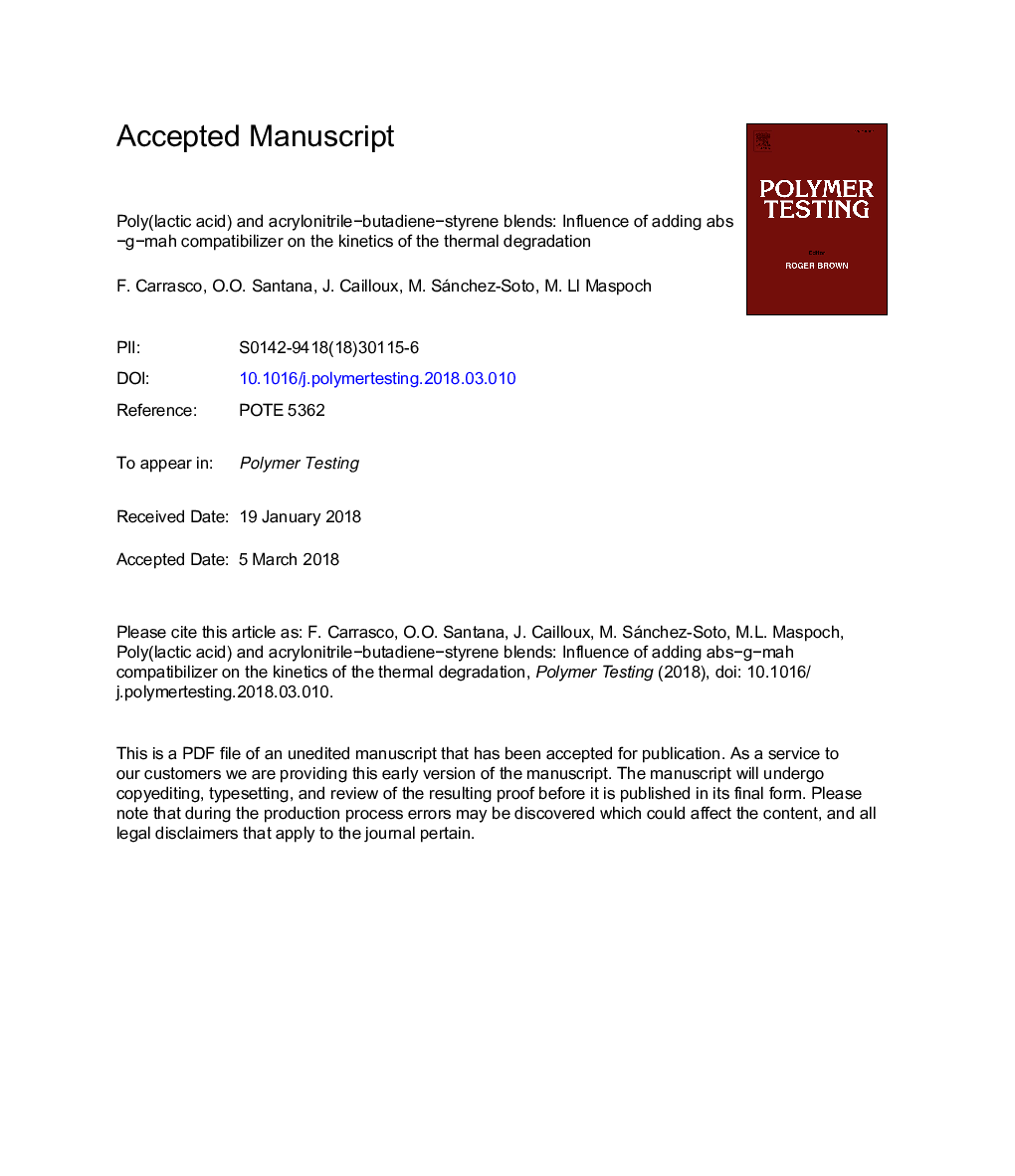| Article ID | Journal | Published Year | Pages | File Type |
|---|---|---|---|---|
| 7825217 | Polymer Testing | 2018 | 31 Pages |
Abstract
Square plates (nominal thickness: 3â¯mm, nominal width: 100â¯mm) of different rheologically modified PLA/ABS blends were manufactured through injection molding, with or without adding ABS grafted with maleic anhydride (MAH). During processing, the properties of the melt were stabilized and enhanced by the addition of a styrene-acrylic multi-functional-epoxide oligomeric reactive agent (SAmfE). PLA-REX was obtained by reactive extrusion of PLA. A general analytical equation was used in order to evaluate the kinetic parameters of the thermal degradation of PLAâREX/ABS and PLAâREX/ABS/ABSâgâMAH blends through thermogravimetric analysis. The thermal degradation of these blends occurred through two different reaction steps. Various empirical and theoretical solid-state mechanisms were tested to elucidate the best kinetic model. In order to reach this goal, plots of standardized conversion functions were constructed. Given that it is not always easy to visualize the best accordance between experimental and theoretical values of standardized conversion functions, a recently proposed index was determined to quantitatively identify the best mechanism. By doing that, it has been possible to determine the right activation energy of the thermal degradation. It has been demonstrated that the best mechanisms for these materials were R2 (i.e. phase-boundary-controlled reaction (contracting area)) for the first step (αâ¯<â¯60%) and F3 (i.e. three order reaction) for the second one (αâ¯>â¯70%). The thermal stability of PLAâREX/ABS blend was greatly improved by adding the ABSâgâMAH compatibilizer. These findings were also confirmed by means of morphological characterization through scanning electron microscopy.
Related Topics
Physical Sciences and Engineering
Chemistry
Organic Chemistry
Authors
F. Carrasco, O.O. Santana, J. Cailloux, M. Sánchez-Soto, M. Ll. Maspoch,
